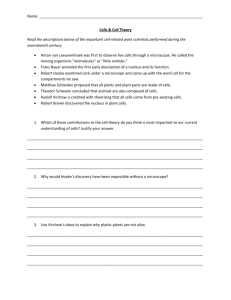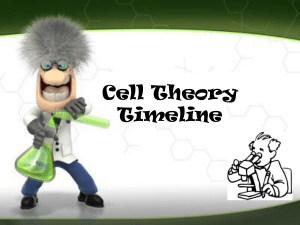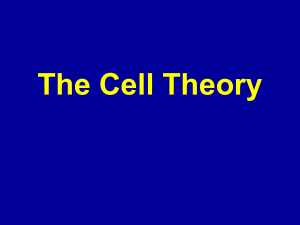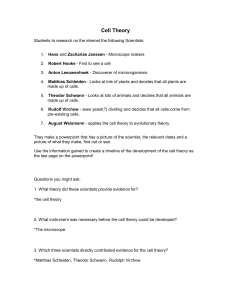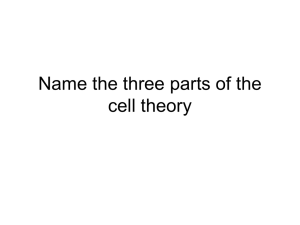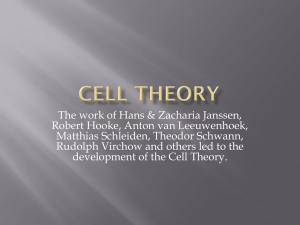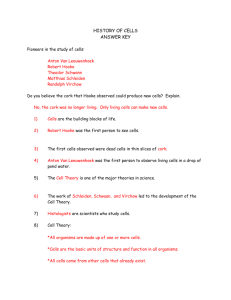Hans and Zacharias Janssen
advertisement
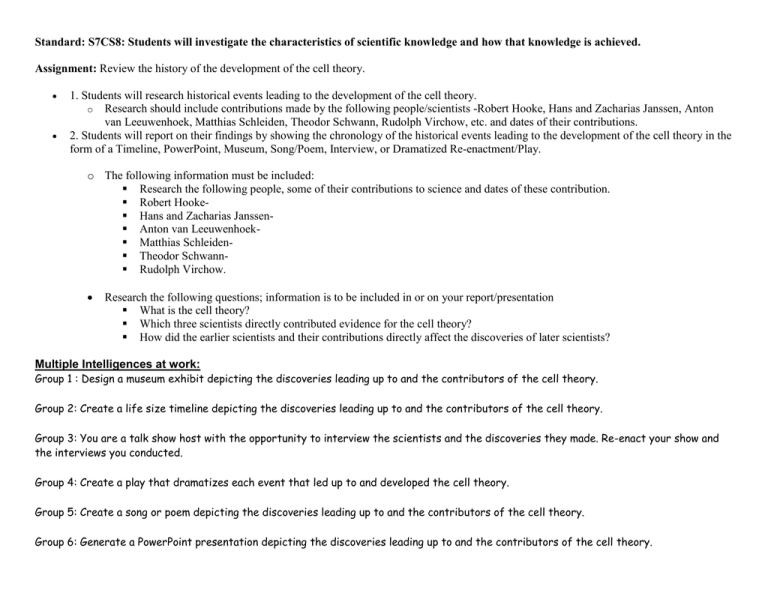
Standard: S7CS8: Students will investigate the characteristics of scientific knowledge and how that knowledge is achieved. Assignment: Review the history of the development of the cell theory. 1. Students will research historical events leading to the development of the cell theory. o Research should include contributions made by the following people/scientists -Robert Hooke, Hans and Zacharias Janssen, Anton van Leeuwenhoek, Matthias Schleiden, Theodor Schwann, Rudolph Virchow, etc. and dates of their contributions. 2. Students will report on their findings by showing the chronology of the historical events leading to the development of the cell theory in the form of a Timeline, PowerPoint, Museum, Song/Poem, Interview, or Dramatized Re-enactment/Play. o The following information must be included: Research the following people, some of their contributions to science and dates of these contribution. Robert Hooke Hans and Zacharias Janssen Anton van Leeuwenhoek Matthias Schleiden Theodor Schwann Rudolph Virchow. Research the following questions; information is to be included in or on your report/presentation What is the cell theory? Which three scientists directly contributed evidence for the cell theory? How did the earlier scientists and their contributions directly affect the discoveries of later scientists? Multiple Intelligences at work: Group 1 : Design a museum exhibit depicting the discoveries leading up to and the contributors of the cell theory. Group 2: Create a life size timeline depicting the discoveries leading up to and the contributors of the cell theory. Group 3: You are a talk show host with the opportunity to interview the scientists and the discoveries they made. Re-enact your show and the interviews you conducted. Group 4: Create a play that dramatizes each event that led up to and developed the cell theory. Group 5: Create a song or poem depicting the discoveries leading up to and the contributors of the cell theory. Group 6: Generate a PowerPoint presentation depicting the discoveries leading up to and the contributors of the cell theory. Hans and Zacharias Janssen Dutch lens grinders, father and son produced first compound microscope (2 lenses) Robert Hooke (1665) English scientist looked at a thin slice of cork (oak cork) through a compound microscope observed tiny, hollow, roomlike structures called these structures 'cells' because they reminded him of the rooms that monks lived in only saw the outer walls (cell walls) because cork cells are not alive Anton van Leeuwenhoek (around the same time as Hooke 1680?) Dutch fabric merchant and amateur scientist looked at blood, rainwater, scrapings from teeth through a simple microscope (1 lens) observed living cells; called some 'animalcules' some of the small 'animalcules' are now called bacteria Matthias Schleiden (1838) German botanist viewed plant parts under a microscope discovered that plant parts are made of cells Theodor Schwann (1839) German zoologist viewed animal parts under a microscope discovered that animal parts are made of cells Rudolph Virchow (1855) German physician stated that all living cells come only from other living cells

